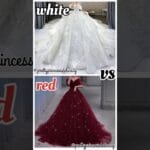Embark on an exciting journey through the history of clothing in “Fashion Through the Ages: A Journey.” Discover how styles …
source
Fashion Through the Ages: A Journey
Fashion is more than just clothing; it is a reflection of societal norms, cultural shifts, and individual expression. As we journey through the ages, we uncover how fashion has evolved, highlighting key trends, influences, and transformations that have defined various eras.
The Ancient World
1. Prehistoric and Ancient Civilizations
In the prehistoric era, clothing was primarily functional, made from animal hides and plant fibers for warmth and protection. As civilizations emerged, so did the complexity of their attire. The Egyptians, for example, embraced linen garments adorned with intricate jewelry, signifying status and wealth. Similarly, the Greeks and Romans favored draped styles, with flowing garments like togas and chitons becoming symbols of civic identity and social hierarchy.
2. Middle Ages (500-1500)
The Middle Ages was characterized by the feudal system, influencing fashion significantly. Noble class members donned luxurious fabrics like silk and velvet, while peasants wore simple woolen garments. The introduction of tailors led to more structured designs, including pointed shoes and elaborate headdresses. The age also saw fashion becoming a powerful tool for expressing individuality, as depicted in illuminated manuscripts.
The Renaissance to the Enlightenment (15th-18th Century)
3. Renaissance (1400-1600)
The Renaissance marked a revival of art, culture, and learning, which was mirrored in fashion. Rich fabrics such as brocade and furs became popular, along with extravagant accessories. Innovation in tailoring produced silhouettes that emphasized the human form, with women’s gowns featuring wide sleeves and corsets.
4. Baroque and Rococo (17th-18th Century)
The Baroque style embraced grandeur, with voluminous skirts and elaborate embellishments. Rococo fashion introduced pastel colors and delicate patterns, epitomized by figures like Marie Antoinette. Men’s fashion also flourished, moving from practical garments to ornate coats and embellished waistcoats, complete with knee breeches.
The Industrial Revolution to the 20th Century
5. Victorian Era (1837-1901)
The Victorian era brought about significant change, fueled by the Industrial Revolution. Mass production made fashion more accessible. Expansive skirts with crinolines and elaborate corsetry defined women’s fashion, while men opted for three-piece suits. This period also gave rise to fashion magazines, paving the way for a consumerist culture.
6. Early 20th Century (1900-1930)
The early 20th century witnessed a dramatic shift as the world approached modernity. The flapper style emerged in the 1920s, celebrating a break from convention with shorter hemlines and a more relaxed silhouette. Coco Chanel introduced the concept of "casual chic," promoting comfort alongside elegance.
7. Mid to Late 20th Century
The mid-century brought diverse influences, from the beatniks and hippies to the punk movement. Each group expressed its ideals through fashion, with denim becoming a symbol of rebellion. The 1980s saw an explosion of bold colors, oversized silhouettes, and extravagant accessories, while the 1990s embraced minimalism and grunge aesthetics.
Fashion in the 21st Century
8. Contemporary Trends
Today, fashion is often a confluence of various influences, embracing a globalized world. Sustainability has emerged as a critical concern, with eco-conscious brands gaining traction. The fusion of streetwear with high fashion challenges traditional boundaries, making fashion more accessible and inclusive. Social media platforms have transformed the industry, allowing individuals to curate their personal style and redefine trends instantaneously.
9. Cultural Reflection
Fashion continues to reflect societal changes, addressing issues such as gender fluidity, racial diversity, and body positivity. Designers are increasingly using their platforms to advocate for social justice, pushing the boundaries of what fashion can represent.
Conclusion
Fashion is an ever-evolving narrative that encapsulates human history and culture. From ancient drapery to modern streetwear, it tells the story of who we are, where we come from, and, importantly, where we are headed. As we look to the future, fashion will likely continue to innovate, adapt, and inspire, proving that it is an integral part of our social fabric.


